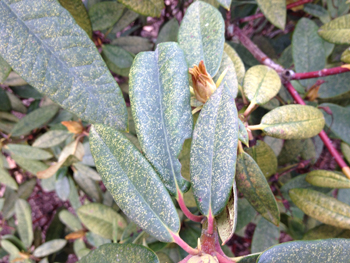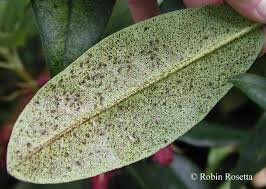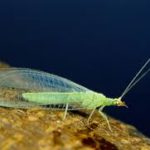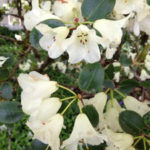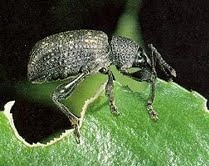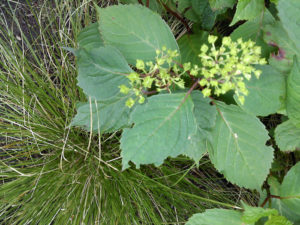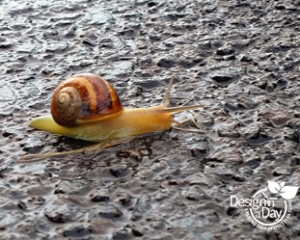
Slugs and snails do a lot of damage in Portland gardens.
Slugs and Snails in your Portland Landscape
My history with slugs in the garden
I was never thrilled with my options for dealing with slugs and snails. In the 80’s we had the typical little gray French slugs and snails in our gardens and they were pesty enough. I had often just hand picked them and kept the numbers down. Then in the 90’s we started seeing California Brown Snail and they added significantly to the total damage. It was too much for me to manage organically. The beer bait didn’t work for my garden on a city sidewalk in NW Portland’s Nob Hill District. Dogs would drink the beer which is NOT good for them and the traps looked tacky too. Using the snails for escargot doesn’t work as a pest management practice since the typical serving is six 1 ½” snails per person. My family would never go for Escargot anyway. They are not adventurous diners.
Slug Bait Problems
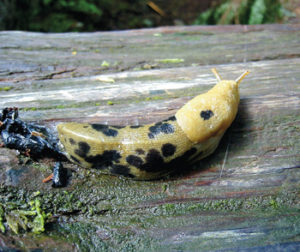
The banana slugs only eat leaves that are decaying or broken. They also pollinate native spring flowering plants on the forest floor. I did not like leading them to slaughter.
I started using the “pet safe” iron phosphate slug bait. It was an easy method to cut down the population compared to beer baiting or hand picking them. The problem with slug bait is that it does not discriminate. It would lure innocent NW native banana slugs to their death along with the real culprits that did the damage to my plants.
Another problem with slug bait is it doesn’t protect your plants immediately. Slug bait lures the slugs to the bait but does not kill them right away. They have time to do a lot of damage before they sicken, stop feeding and then die.
Worms die from iron poisoning
The major issue is the iron phosphate remains in the slug’s body and breaks down and ends up in the soil. This iron residue left behind in the soil created a toxic environment for worms, the creatures who keep our soil healthy.
I didn’t notice it myself until I got raised beds in my community garden. I noticed a steady decline in the population of worms in my beds.
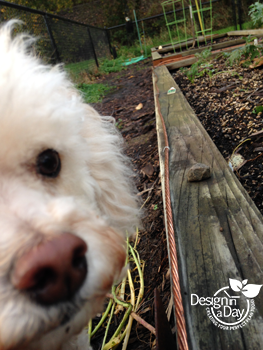
Daizzie inspecting the copper wire which keeps slugs out of my veggies by producing electric shock.
There is an inert ingredient in the pet safe slug bait that combines with an active ingredient to kill earthworms. They die from iron poisoning. The combination was also causing harm to wildlife and to small domestic animals so it was time for me to make a big change.
Slug Bait Alternative-Natural Slug Control
Ann Lovejoy is a trusted resource and treasure for Pacific NW gardeners. She is the one that made the connection between the iron phosphate “pet safe” slug bait and the harm it was doing. Read more about how slug bait kills worms.
She made several suggestions for what to use instead of slug bait. My favorite is using liquid caffeinated coffee sprayed onto plants as a repellent. I tested it this past fall to great success. I was able to protect my kale crop from slugs. I purposely sprayed coffee on only half the plants as a test. The plants I did not spray were missing half their foliage. The plants I sprayed had no holes or missing foliage. I sprayed at least once a week during the fall rains. Ann says a direct spray of coffee will kill the slugs but I could not tell if this was a success. I sprayed the coffee directly on slugs but when I came back the next day the sprayed slugs were no where to be seen. They may have crawled off and quietly expired but I was not sure. Maybe my coffee wasn’t strong enough. I will do more testing now that the soil has warmed up enough for new slugs and snails to hatch. I’ll post again and share what strength of coffee it takes for an obvious demise.
I can’t wait to share this with my landscape design clients. Many clients have pets. The fact that pet safe slug bait is toxic needs to be shared.
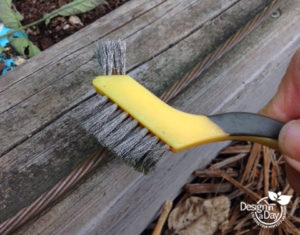
Scrub copper wire with wire brush – slugs can cross the wire if it’s oxidized or dirty.
Use Copper Wire for Raised Beds and Containers
Another option to deal with slugs in raised beds is to line the edge of the bed with copper. I used a copper ground wire but you can use sticky copper tape available at most garden centers and it will last maybe one garden season if you are lucky. It is easy to buy and apply to your raised beds, pottery and containers.
Slug or Snail?
What’s the difference between slugs and snails? Slugs and snails are pretty much the same animals according to Robin Rosetta, Associate Professor at OSU. Over time slugs evolved out of a hard shell so they could move through cramped spaces and allow them to get down into the soil to find food and protection. Apparently, there is still sort of a shell under their hump like mantle. Snails still have a shell and so are restricted to above ground activities. They use their shells to survive inclement weather and are protected from some enemies and predators.
For more information on dog friendly landscaping, contact us!

